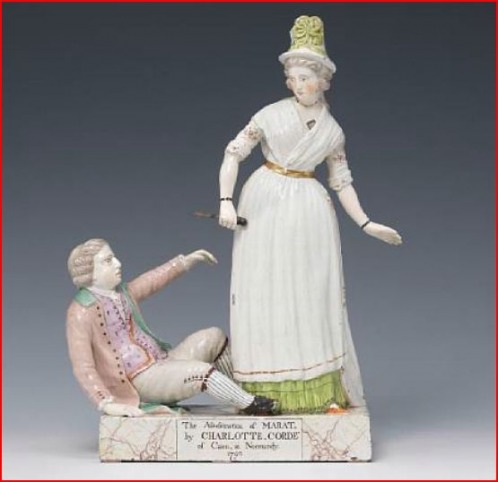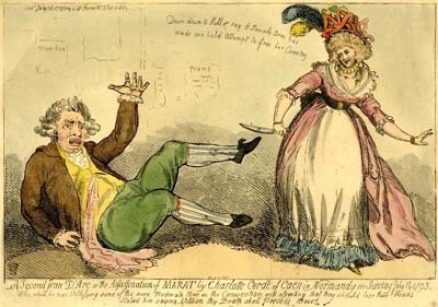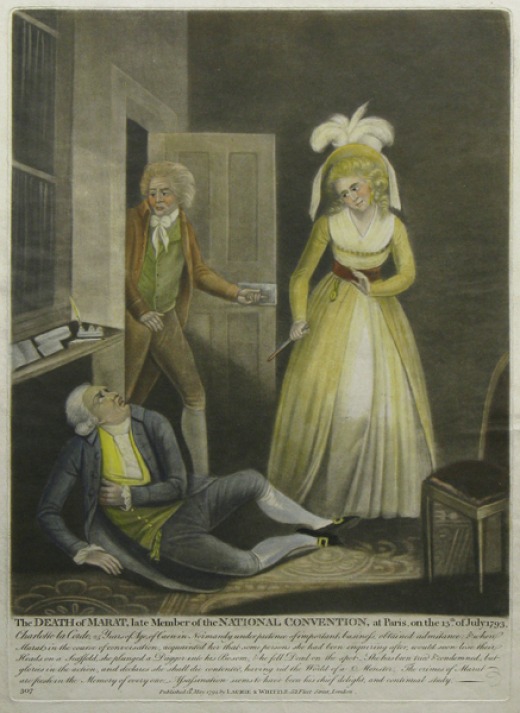Marat quickly blossomed into a radical journalist. Known for his fiery oratory and writing, he emerged as an architect and leader of the bloody Reign of Terror that swept France from June 1793. On July 13th 1793, a young girl named Charlotte Corday, blaming Marat for the mass misery and the steady stream of guillotine victims, visited Marat’s home armed with a 6-inch kitchen knife. Marat was conducting business from his bathtub, where he customarily languished for hours to treat a terrible skin disease he had contracted years earlier while hiding in Paris’s sewers. Charlotte stabbed Marat and he died in his tub. Just four days later, on 17 July 1793, Charlotte Corday, aged 24, went to the guillotine for her crime. During her trial, she stated “I killed one man to save 100,000.”
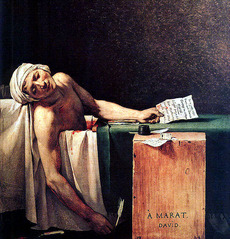
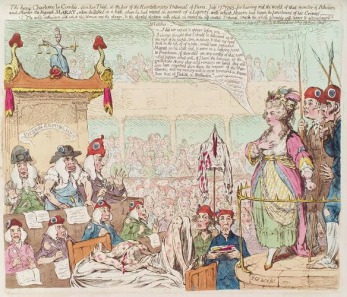
Yes, Charlotte Corday was a hero in Britain. Look how lovely she looks before a dour revolutionary tribunal in James Gillray’s etching of her trial. The heroic Charlotte la Cordé, upon her trial, at the bar of the revolutionary tribunal of Paris, July 17, 1793, by James Gillray, ublished 19 July 1793.
Marat's murder was hot news in its day, and Staffordshire potters have forever captured the moment in clay. Lakin and Poole's figure group is a time capsule, reminding us of an event that might otherwise be forgotten.
